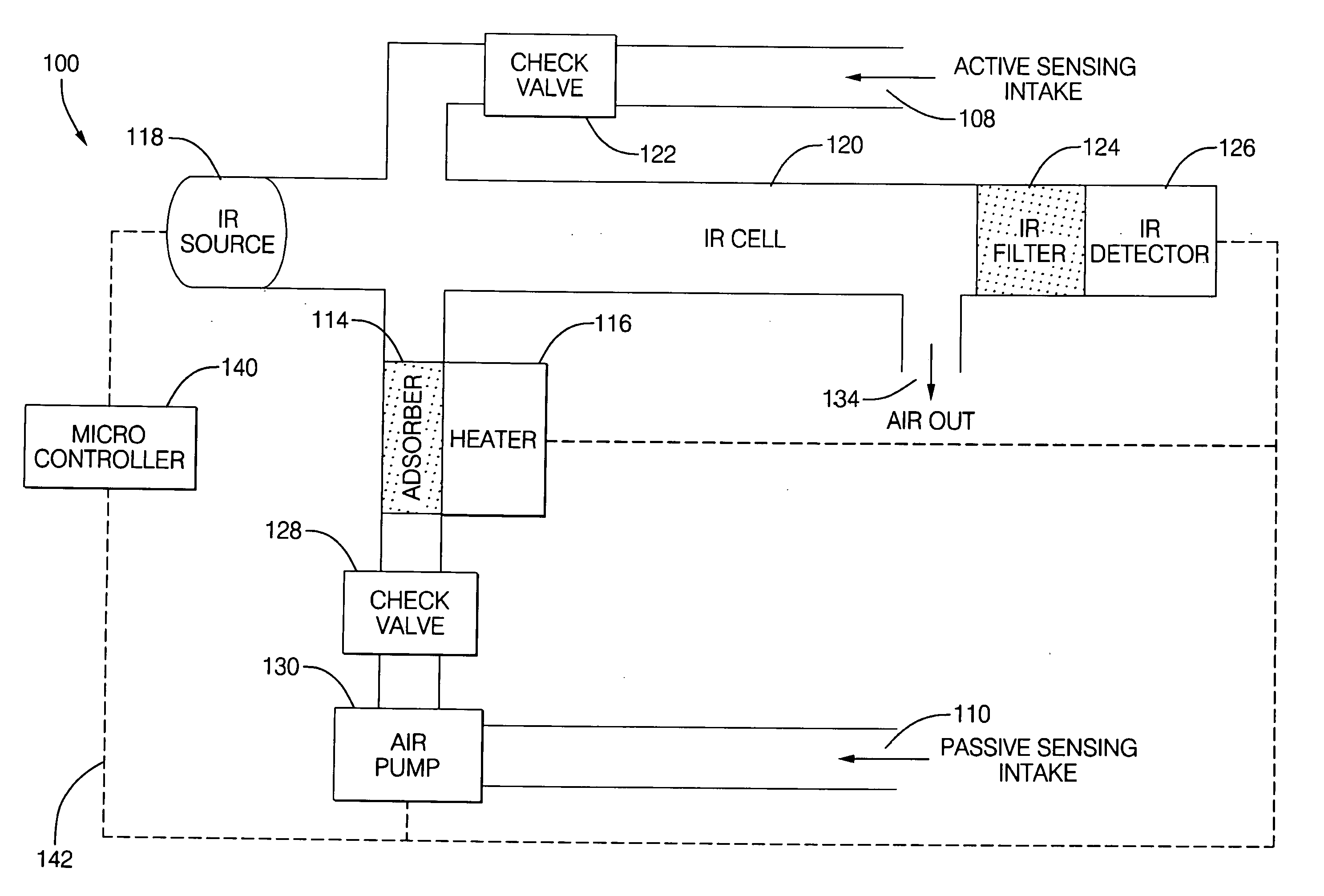Chemical vapor sensor having an active and a passive measurement mode
a technology of chemical vapor and sensor, applied in the field of chemical vapor sensor, can solve the problems of traffic accident fatalities, intoxicated drivers, and the cost of such crashes in the u.s. is about $40 billion per year, and achieve the effects of reducing time inconvenience for drivers, reducing costs, and reducing costs
- Summary
- Abstract
- Description
- Claims
- Application Information
AI Technical Summary
Benefits of technology
Problems solved by technology
Method used
Image
Examples
Embodiment Construction
[0028] Exemplary embodiments are described with reference to specific configurations. Those of ordinary skill in the art will appreciate that various changes and modifications can be made while remaining within the scope of the appended claims. Additionally, well-known elements, devices, components, methods, process steps and the like may not be set forth in detail in order to avoid obscuring the invention. Further, unless indicated to the contrary, the numerical values set forth in the following specification and claims are approximations that may vary depending upon the desired characteristics sought to be obtained by the present invention.
[0029] Presently, in the United States, a driver is legally deemed intoxicated when exhibiting a blood alcohol concentration (BAC) of 0.08%, and therefore violating the law if operating a motor vehicle while intoxicated. Passively monitoring a motor vehicle driver's BAC can facilitate avoiding motor vehicle accidents caused by intoxicated drive...
PUM
| Property | Measurement | Unit |
|---|---|---|
| path length | aaaaa | aaaaa |
| path length | aaaaa | aaaaa |
| path length | aaaaa | aaaaa |
Abstract
Description
Claims
Application Information
 Login to View More
Login to View More - R&D
- Intellectual Property
- Life Sciences
- Materials
- Tech Scout
- Unparalleled Data Quality
- Higher Quality Content
- 60% Fewer Hallucinations
Browse by: Latest US Patents, China's latest patents, Technical Efficacy Thesaurus, Application Domain, Technology Topic, Popular Technical Reports.
© 2025 PatSnap. All rights reserved.Legal|Privacy policy|Modern Slavery Act Transparency Statement|Sitemap|About US| Contact US: help@patsnap.com



